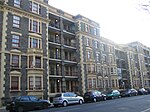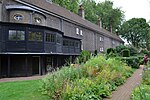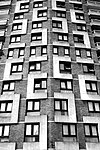George and Dragon, Shoreditch
Former pubs in LondonLGBT pubs in LondonPubs in the London Borough of HackneySaint George and the DragonShoreditch

The George and Dragon was a pub at 2-4 Hackney Road, Shoreditch, East London. In August 2015, the pub's closure was announced, due to a "dramatic" rent increase, and a campaign was launched for it to become an Asset of Community Value.It was a well-known gay venue, and featured live arts projects in conjunction with the Institute of Contemporary Arts, and was known for "total fun and mindless hedonism".
Excerpt from the Wikipedia article George and Dragon, Shoreditch (License: CC BY-SA 3.0, Authors, Images).George and Dragon, Shoreditch
Hackney Road, London Bethnal Green (London Borough of Hackney)
Geographical coordinates (GPS) Address Nearby Places Show on map
Geographical coordinates (GPS)
| Latitude | Longitude |
|---|---|
| N 51.529694444444 ° | E -0.074611111111111 ° |
Address
Cassia Building
Hackney Road
E2 8JL London, Bethnal Green (London Borough of Hackney)
England, United Kingdom
Open on Google Maps







